On The Road
Wild, wild Western Australia with the family
Sign up now: Get ST's newsletters delivered to your inbox
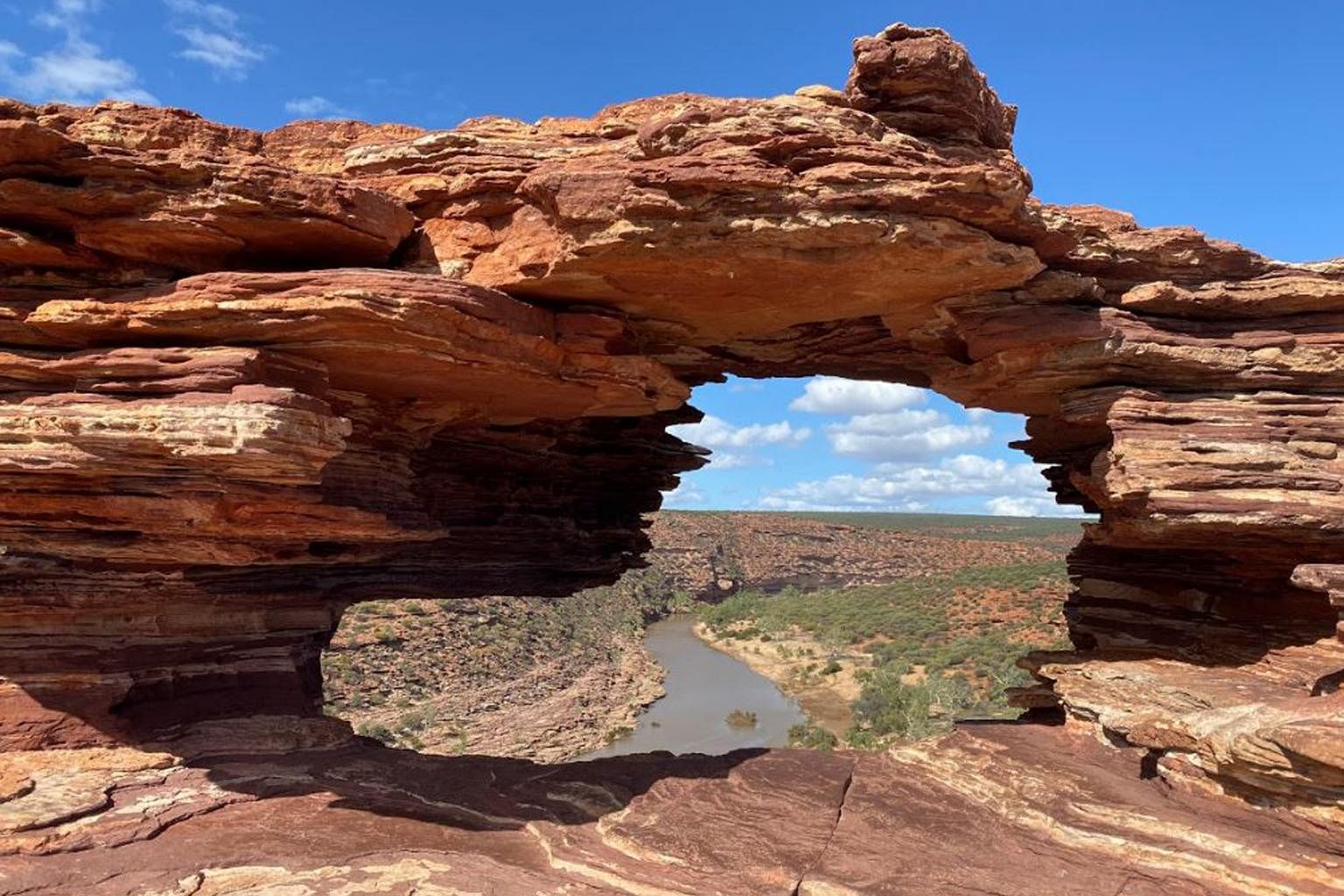
Nature's Window at Kalbarri National Park.
PHOTO: LYDIA VASKO
Lydia Vasko
Follow topic:
KALBARRI AND SHARK BAY, AUSTRALIA - Peering over the precipice, I tune my ear to the sound of birdsong as the jade snake of the Murchison River winds its way through the gorge 100m below.
Kalbarri
I can see red prehistoric rocks and silver-green vegetation below through the steel mesh of the Kalbarri Skywalk, a boomerang-shaped structure that opened in June 2020. The modern rust-and-silver structure, through a clever mix of material and design, is both futuristic and reflective of the surrounding rock formations, which are 400 million years old.
It is a scenic six-hour journey along the Indian Ocean Drive to Kalbarri, a fishing town at the mouth of the Murchison River 600km north of Perth.
This is a haven for nature lovers for whom the spectacular scenery and the activities here - abseiling, fishing, hiking, swimming, surfing, snorkelling, camping, canoeing and kayaking - lure them back year after year.
Australians will easily cover the distance in a day, but drivers less accustomed to long stretches or those with young children can break the trip up into two-hour sections.
Fortunately, there is plenty to see along the way. My husband, 18-month-old daughter and I are making our first big road trip as a family.
On the first day of our drive, we stop in Cervantes for lunch at the Lobster Shack, about 200km north of Perth.
The eatery is a must for juicy fresh-off-the-boat Western Australian rock lobster, grilled and served in a basket with melted garlic butter and fries. Its lobster roll and creamy garlic prawns with rice are other blockbuster menu items.
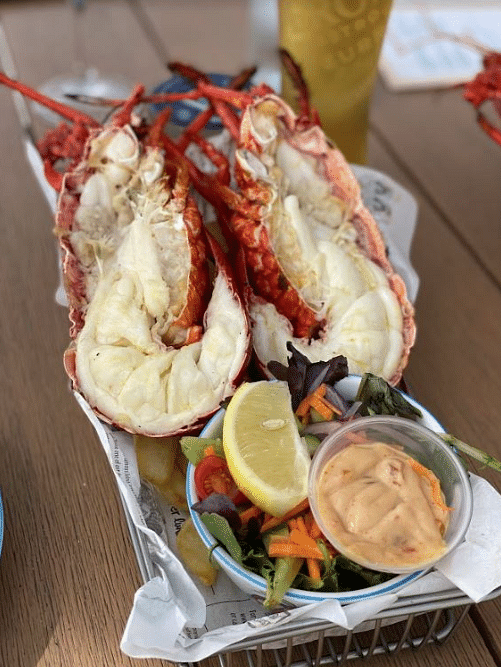
Fresh grilled lobster at the Lobster Shack. PHOTO: LYDIA VASKO
Though it opens only for lunch, seven days a week from 11am to 3pm, it often serves 400 to 500 meals a day, down from 1,000 meals a day before the pandemic when tourists arrived by the busload.
After a tour of the on-site lobster processing factory, we drive 17km to Nambung National Park to see one of Western Australia's most visited attractions, The Pinnacles.
Thousands of natural limestone structures rise out of the yellow sand, some 3.5m tall and over 25,000 years old, slowly revealed over millennia by wind and rain.
Some look like termite mounds, others are decidedly phallic. And as we drive the winding, unsealed desert track, the setting sun casts these ancient shapes in an appealing honeyed glow.
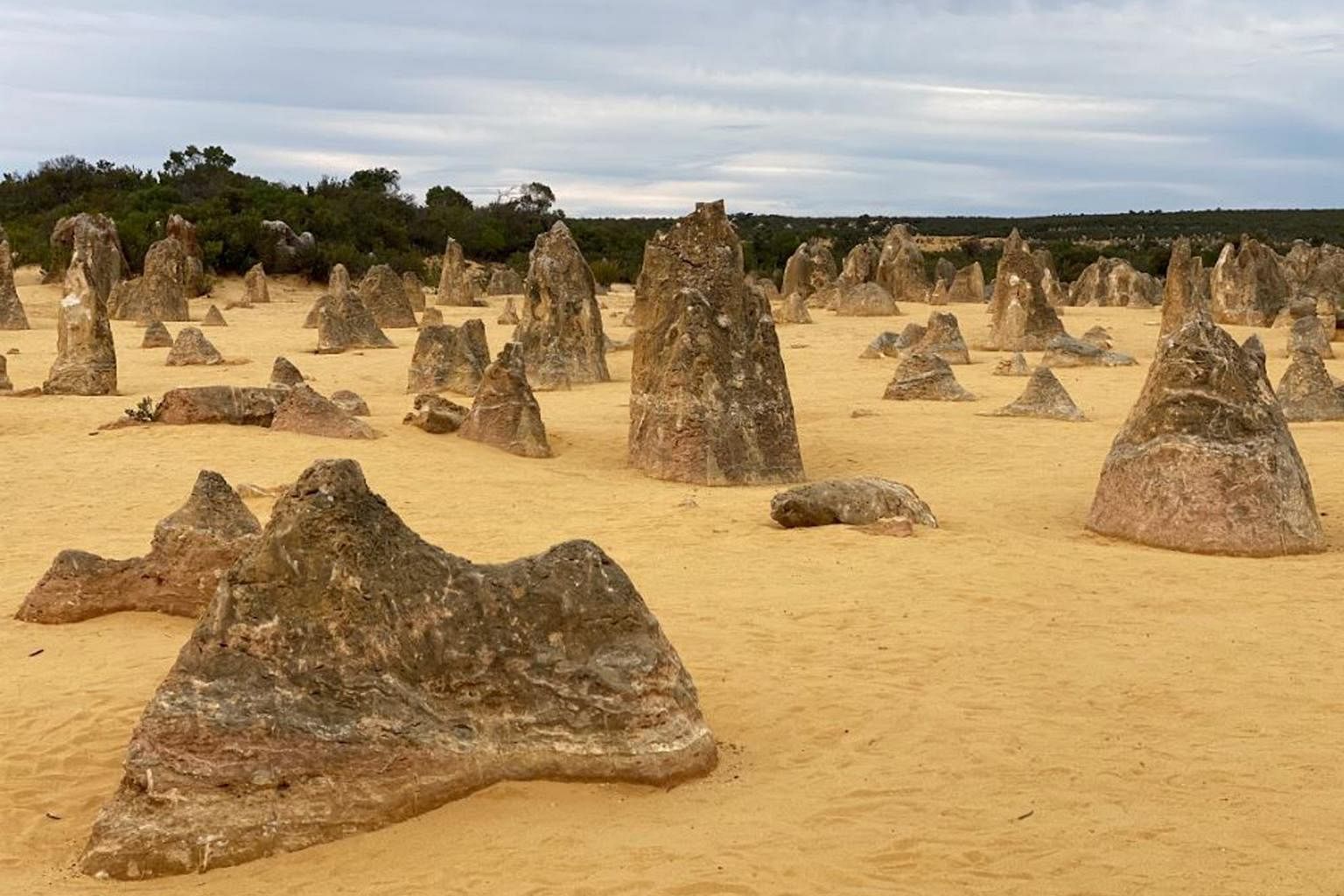
We spend the night in Cervantes and, in the morning, drive 10 minutes north to Jurien Bay to join a sea lion tour with Turquoise Safaris.
Heavy rains have lashed the coast during the night, more storms are on their way and I keep a worried eye and a tight grip on our toddler as the boat surges through the rough sea.
Within 20 minutes, we arrive at Essex Rocks, a small island with a population of 30 to 40 sea lions.
After a quick safety briefing, we don our wetsuits, fins and snorkels and jump in. The water is 18 deg C and it takes a minute to catch my breath in the choppy sea. I swim towards the group treading water 20m from the shore.
The storms have whipped the seabed, making visibility poor with swirling sand. But the sun is out and most of us stand in neck-high water, staring at a dozen sea lions warming themselves on the beach. I had heard they are curious, playful creatures, the puppies of the sea, but none seem interested in us.
Our guides make high-pitched yelps from their paddleboards and slap the water with their oars. One guide takes advantage of the waves and surfs past the sea lions, trying to coax them into the water.
Finally, a sea lion waddles in. It is Scarlet, a young female, who rolls around the paddleboard as we frantically swim towards her. There are about 30 of us in the sandy shallows and one sea lion which, quick as lightning, swims off in another direction.
I am behind the pack, and it is a comedy of errors watching a bunch of awkward humans try to keep up with an animal in her element.
All of sudden, through the murky water, she appears in front of me. She pops her head above the surface and so do I, and we make eye contact for a second as though we are saying hello, before she dives down again.
I dive down with her as best I can and roll around and wave my hands, trying to engage her attention. She is sleek and silky, and I swear she is smiling at me through her whiskers. We frolic together for a minute at most, as though we are the only ones in the water. Then she swims off to find another playmate.
I cannot believe my luck when, a few minutes later, I manage to get close again. I dive down and pump my legs furiously trying to keep up. She briefly floats alongside me until I have to come up for air, and then she is gone.
It is enough. Electrified by her sparkling presence, I make my way back to the boat to switch care of my daughter with my husband and give him a chance in the water.
The skipper tells us later that, some days, the sea lions never come in at all and we are quite fortunate to swim with two in the hour we are there.
Myriad hues
Back in the car, we navigate the road lined with dense, low-lying heaths of acacia and myrtles so thick, I think I could walk across them.
Bright banksia trees and dunes of ivory sand punctuate the green, undulating drive up to Geraldton, the coastal city where we spend the night.
Continuing north, sheep and cattle graze in golden pastures with million-dollar views of the turquoise sea. The deep blue sky pops against the red, iron-rich earth.
Soon, we reach Hutt Lagoon, a pink lake coloured by beta-carotene-producing algae. An organic source of Vitamin A and a natural food colouring, the beta-carotene is harvested and used in everything from food and beverages to baby formula and cosmetics.
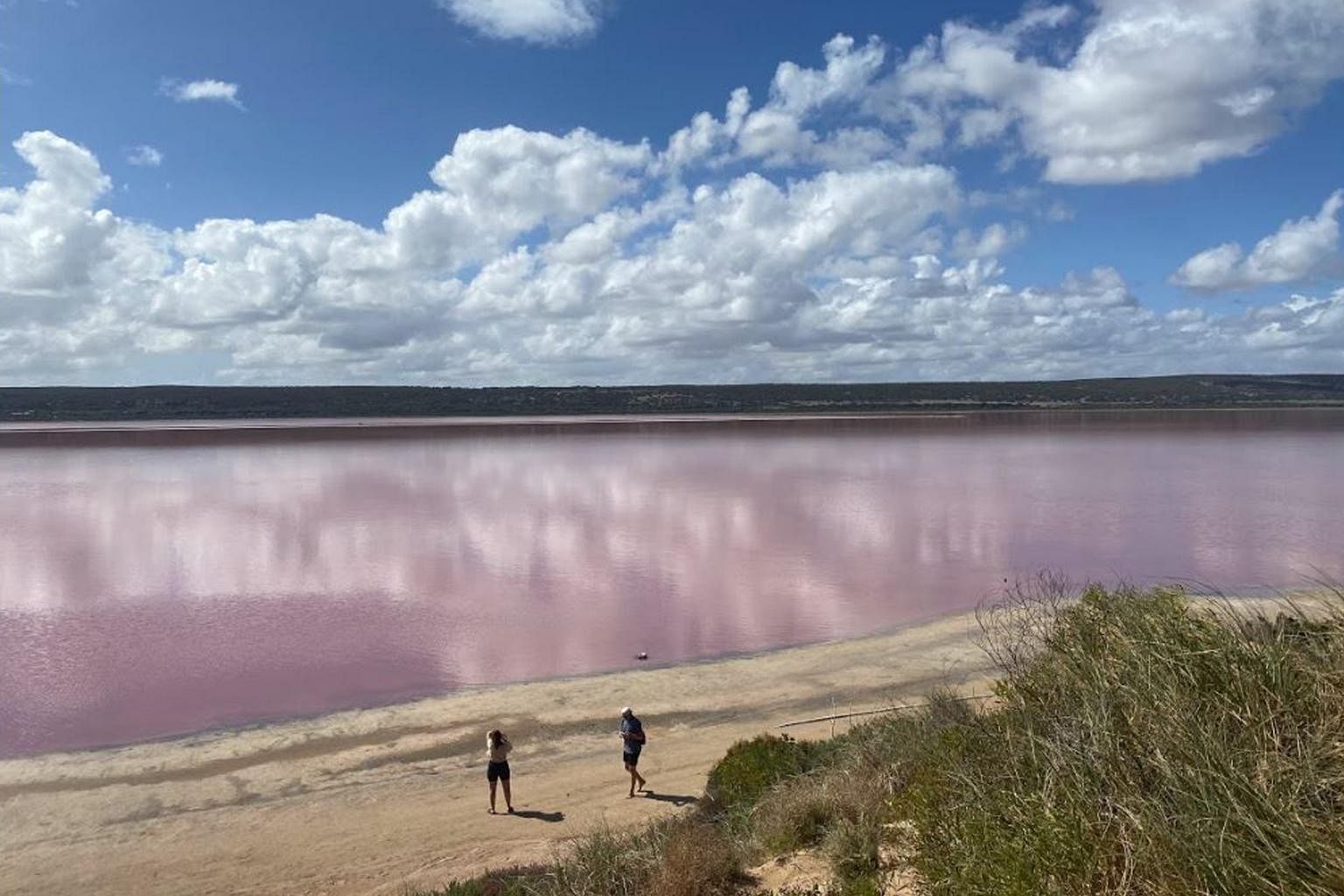
Bright flamingo pink in some parts and a dusty rose in others, I am told the lake is at its best between 10am and 2pm.
Just 30 minutes later, we drive into Kalbarri. A year ago, a tropical cyclone with 170kmh winds smashed into the town, destroying many homes and businesses.
Miraculously, no one was killed, but some of the properties still have not recovered and the damage is evident on the drive into town.
Yet, any debris has long been swept away. The streets are clean and most businesses are operating as usual.
About 1,500 people live here year round, and the population spikes to 8,000 during the school holidays. It is a quiet, relaxed town that buzzes with activity during these periods, a fantastic destination for the outdoorsy, with so much to see and do along the Murchison River and 180,000ha Kalbarri National Park.
The park contains 1,200 native plant species, some found nowhere else in the world, and is famous for its wildflowers - orchids, star flowers and everlastings - which bloom between early July and mid-November, but are at their peak in August and September.
About 170 species of birds, including sea eagles, pelicans, swallows, fairy martins and red-tailed black cockatoos, patrol the area.
You will likely see emus, kangaroos and echidnas roaming around too. I see a daddy emu with two of his chicks while on a half-day canoe safari tour with Kalbarri Boat Hire down a section of the Murchison River.
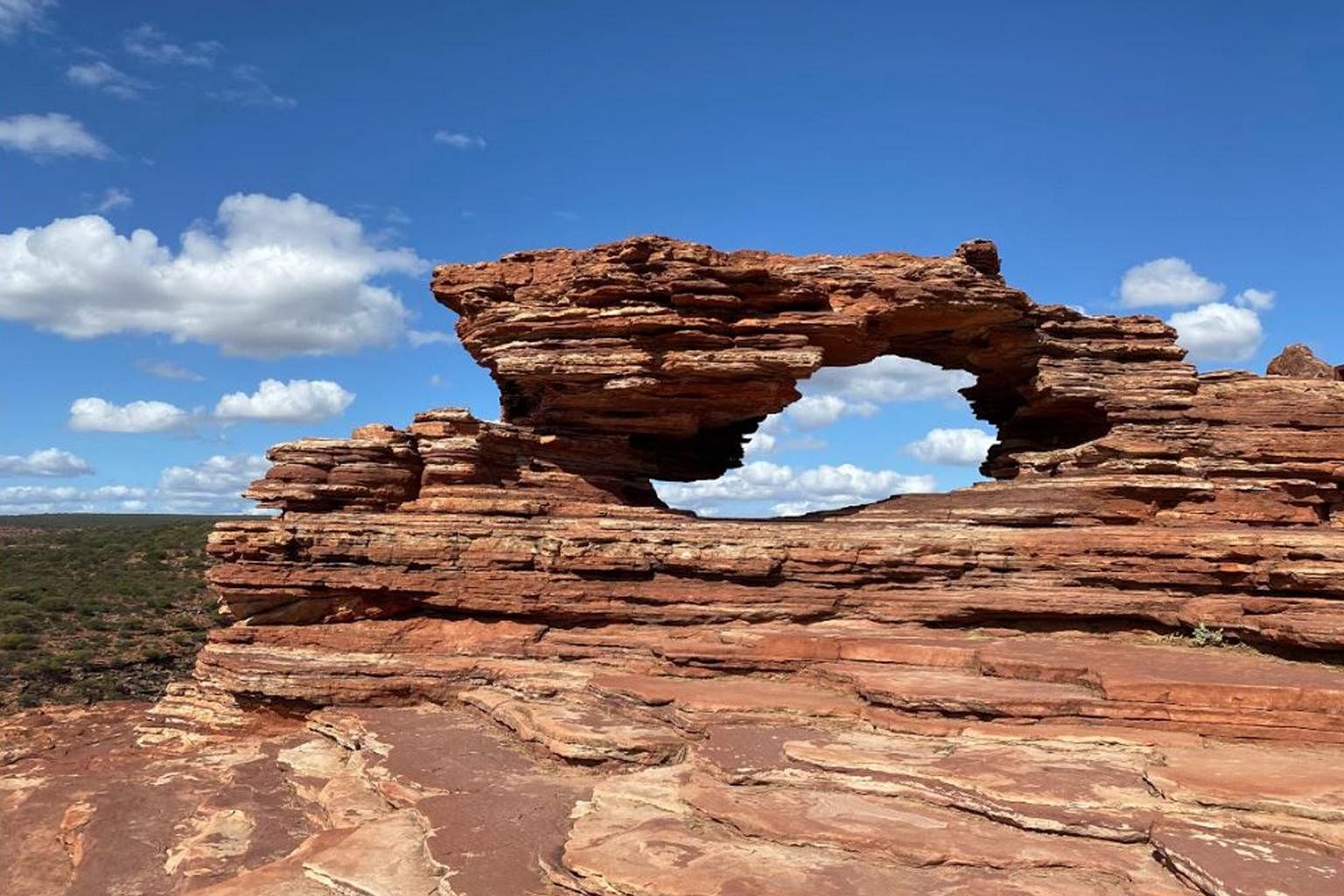
As the river carved its way through the rust-coloured sandstone, it left some spectacular rock formations, including Nature's Window, a porthole through the gorge, perfectly framing the river below.
The gorge is lined with walks to suit novice to experienced hikers, but we stick to the paved routes with our toddler, making quick visits of Nature's Window and the Skywalk because of the strong sun and swarming flies.
Stars in the spotlight
We return to the Skywalk after sunset with husband-and-wife team Guy Acosta and Christina Destina of D'Guy Charters for a look at the stars. They are the only operators who offer a Stargazing Tour at the Skywalk, which has quickly become their most popular offering since they launched it in October 2020.
We have the Skywalk to ourselves and, on the cantilevered platform, away from the lights of any city, town or the carpark, I begin to understand with my own eyes the depth of the night sky.
There are stars burning everywhere, while dark holes in the hazy veil of the Milky Way lead my eye into the farthest reaches of space.
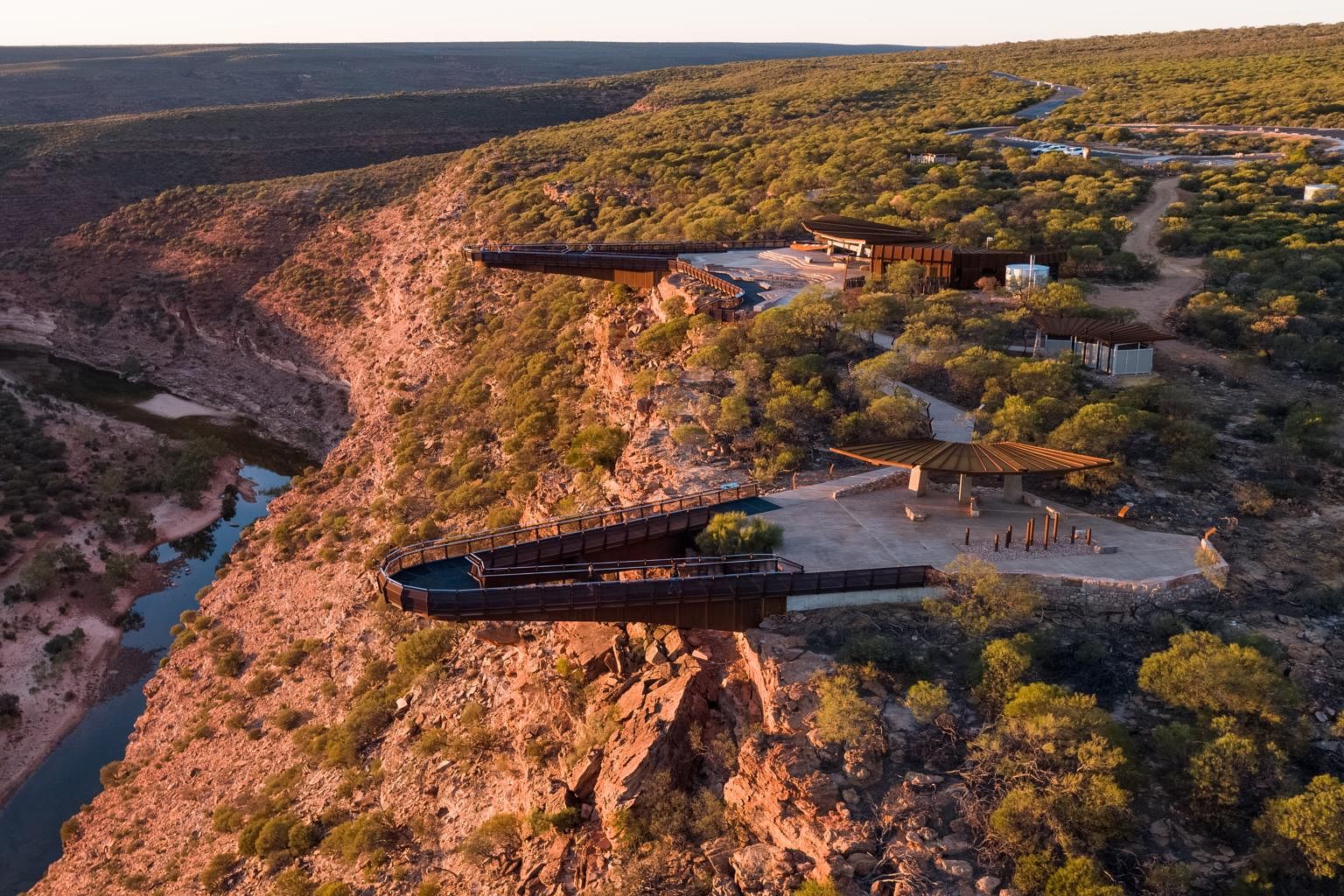
Ms Destina points out the stars and constellations, using a super-powered laser pointer, such as the heavenly twins Pollux and Castor, which are part of the Gemini constellation, and Orion the hunter, and the stars Betelgeuse and Rigel which form his shoulder and heel.
She asks if I can tell what colour they are and, as my eyes adjust, I can make out the red glow of Betelgeuse and the blue of Rigel with my naked eye.
Using her impressive Celestron Nexstar 8se telescope, I get a closer look at the gaseous orbs and I feel like my brain is going to short-circuit with a sudden burst of questions about the universe.
So instead I spend the next 30 minutes attempting to take pictures of the sky, using a trick Ms Destina shows me on my iPhone, before I cannot ignore the cold anymore and we head back to the car.
Whale-watching
There are plenty of family-friendly entertainment options in town too, with wild pelican feeding at 8.45am every morning, paddle boat, kayak and motorboat rental. Also fun is a Nature Playground with a wooden fort, boat, rope bridge and zipline all along the foreshore.
The rock pools at Back Beach, a 10-minute walk from town, are ideal for exploring at low tide, and just outside of town, an in-shore limestone reef known locally as Blue Holes is a fish habitat protection area and no-fishing zone with large rock pools that are perfect for swimming and snorkelling.
Just down the coast, Jakes Point is one of the state's most famous surf breaks. Even if you do not surf, it is a fantastic spot to enjoy a morning cuppa from the nearby coffee van and watch the dolphins and early morning surfers riding the waves.
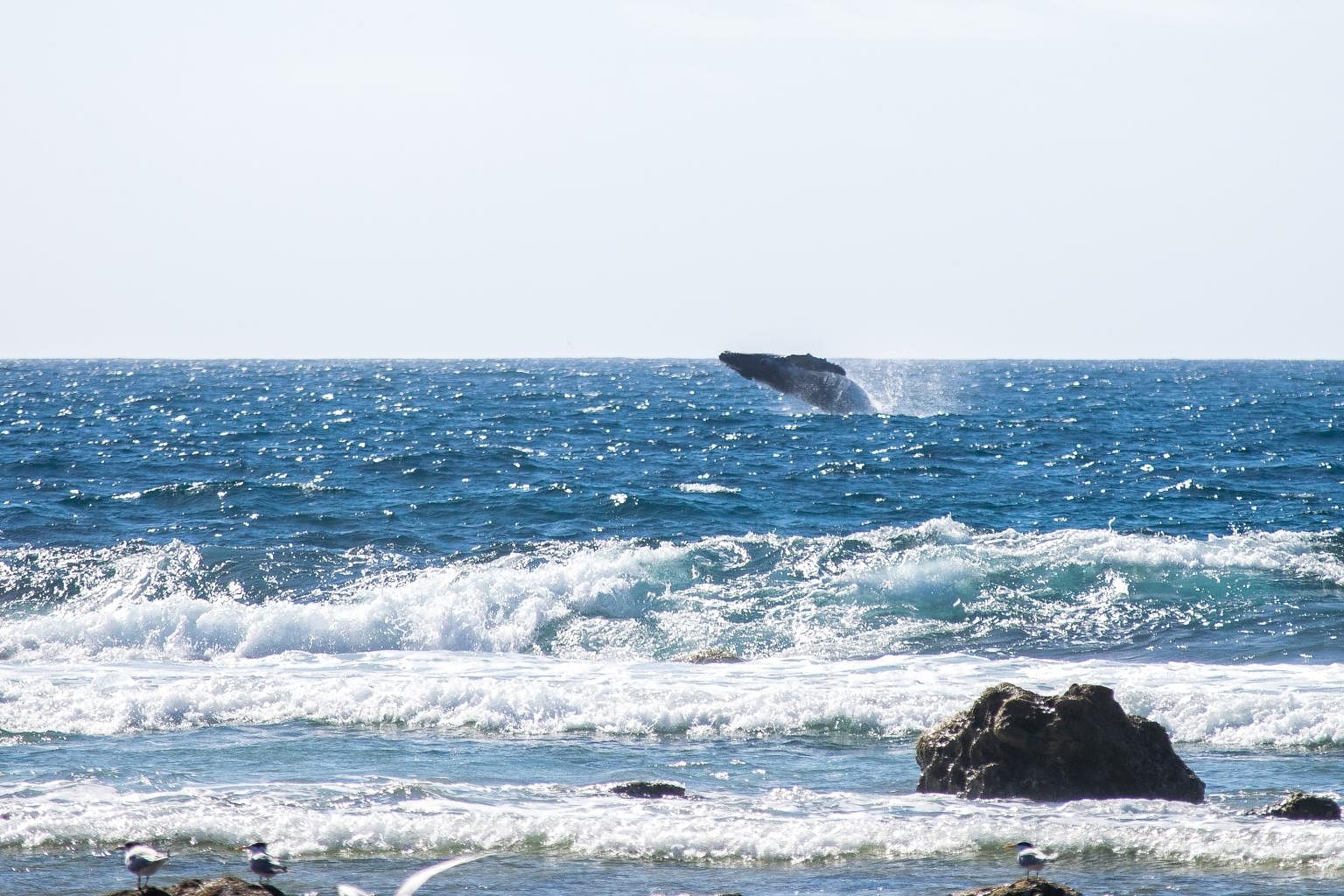
From May to November, you might even see whales passing by. About 22,000 of the world's humpback whales swim past the Kalbarri coastline in this season, making their way north to their breeding grounds along the Kimberley coast from May to August - then back south from August to November, closer to the shoreline this time to protect their new babies.
The windswept coastal cliffs and lookouts for geological formations like Island Rock and Natural Bridge provide the perfect platform for whale-spotting, and to admire the Indian Ocean crashing onto the rocks 80m to 100m below.
These waters are teeming with life, and the Abrolhos Islands, an archipelago of 122 islands about 100km off the coast, are a favourite spot for swimming, snorkelling and fishing charters. They are a prime spot for the region's rock lobster, as well as pink snapper, dhu fish, coral trout and red emperor.
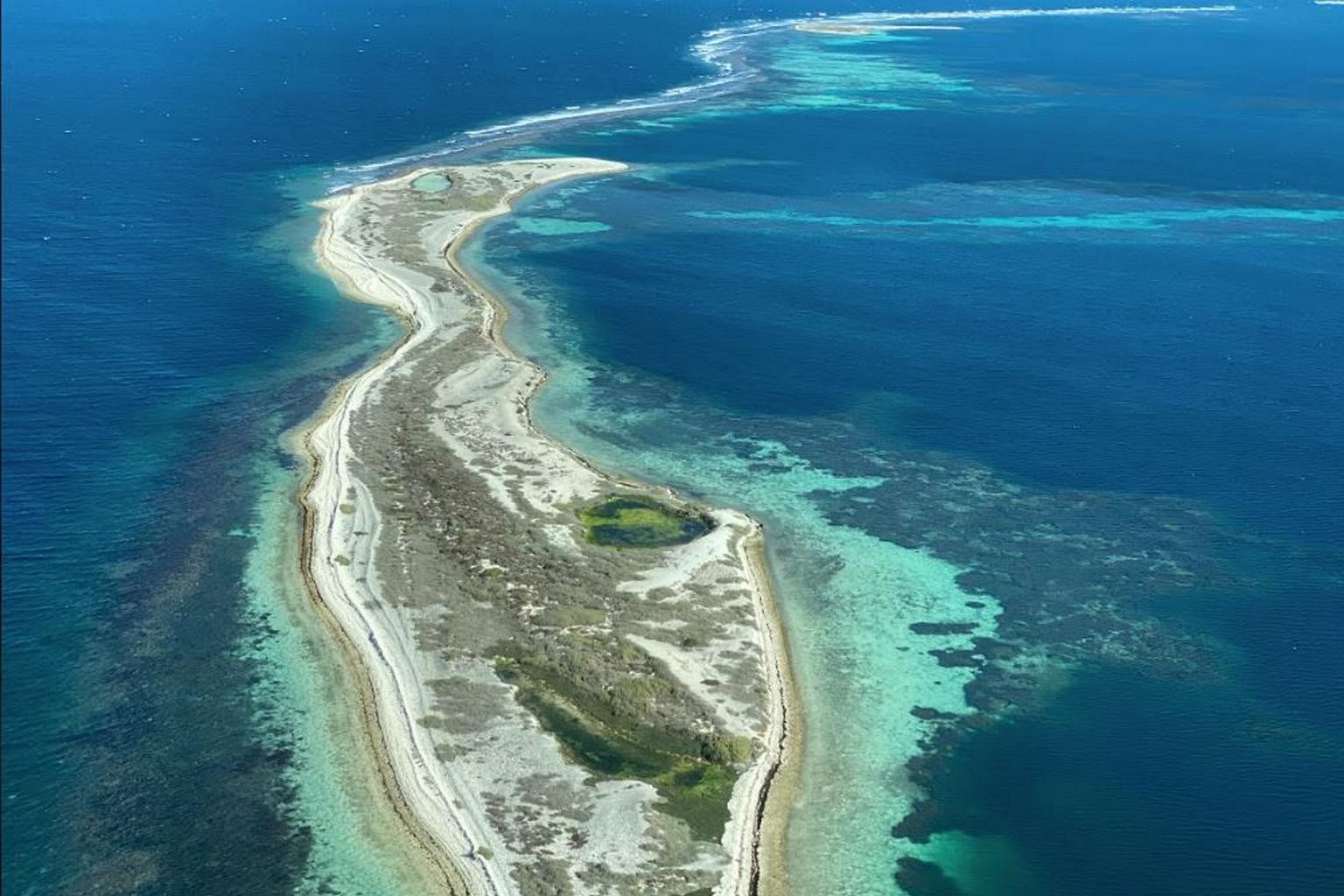
Its treacherous reefs are also the site of numerous well-known shipwrecks, and from the passenger seat of a cosy Cesna 210 operated by Kalbarri Scenic Flights, I can see the site where the Batavia ran aground on the reef in 1629. Alex, the pilot, tells me the story of the infamous mutiny and mass murder which ensued, as we soar above the waves.
Fishing is still a mainstay of the area, and you must eat at least one meal at Finlays.
Specialising in fresh Western Australian seafood, local cider and beers from the onsite microbrewery, it is often described as a tin shed with a dirt floor.
But this typically Australian underselling does not do justice to the selection of outback antiques, surf paraphernalia, cosy fire pits and framed Australiana prints on the ceiling and walls which give the shed and the large eucalyptus-shaded courtyard a homely feel.
Australian hits from the 1980s and 1990s pump through the speakers while we are there, digging in to fresh oysters, Shark Bay cockles in a creamy white wine and garlic sauce, and seafood linguine loaded with Exmouth tiger prawns, locally caught seabream, and more cockles in a lightly spicy tomato sauce.
This Kalbarri institution, in operation since 1989, is a very popular spot, especially on Sundays when there is live music, so make a reservation beforehand.
Three days in Kalbarri is just enough to scratch the surface of the place. On our last day, the setting sun casts pink and purple light across the heath, and it is a deeply satisfying experience to find the journey as memorable as the destination.
Shark Bay
Had I always dreamed of being cast away on a desert island like Robinson Crusoe? No. Do those dreams fill my heart the moment my feet land in the clear turquoise waters and soft ivory sand of Dirk Hartog Island? Absolutely.
Extending into the Indian Ocean from the most westerly point of mainland Australia, the 80km-long island forms the outer barrier of Shark Bay, a Unesco World Heritage site 800km north of Perth on Western Australia's Coral Coast.
Shark Bay's seagrass beds are the largest and richest in the world, home to dugongs, dolphins, turtles, manta rays, seabirds and more than two dozen species of sharks.
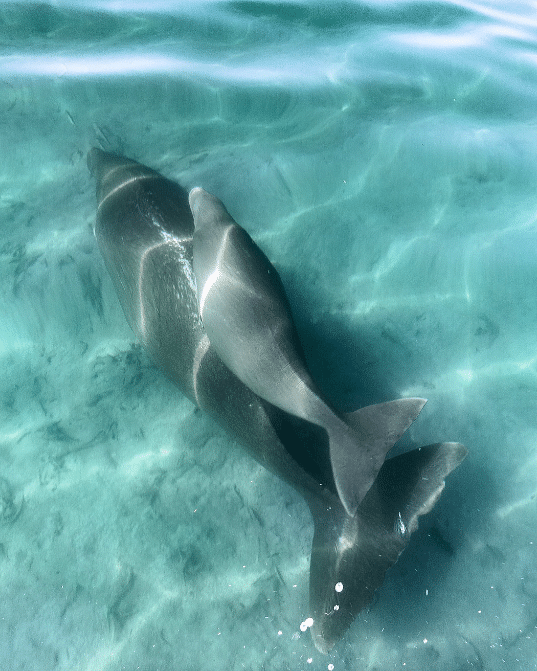
Sunbaked and seaswept, I have experienced a sort of baptism by sand, salt and smiles in the scant three days I spend in Shark Bay. Something about this place speaks to me.
It starts on the first night of our arrival in Monkey Mia, a tourist destination on the eastern side of the Peron Peninsula which bisects the bay. It is best known for the population of wild Indo-Pacific bottlenose dolphins who have been visiting the shallows near its jetty for more than 50 years.
One of the most reliable places for dolphin interactions in the world, a pod of more than 100 lives in the bay, and seven or eight are regular visitors to Monkey Mia beach.
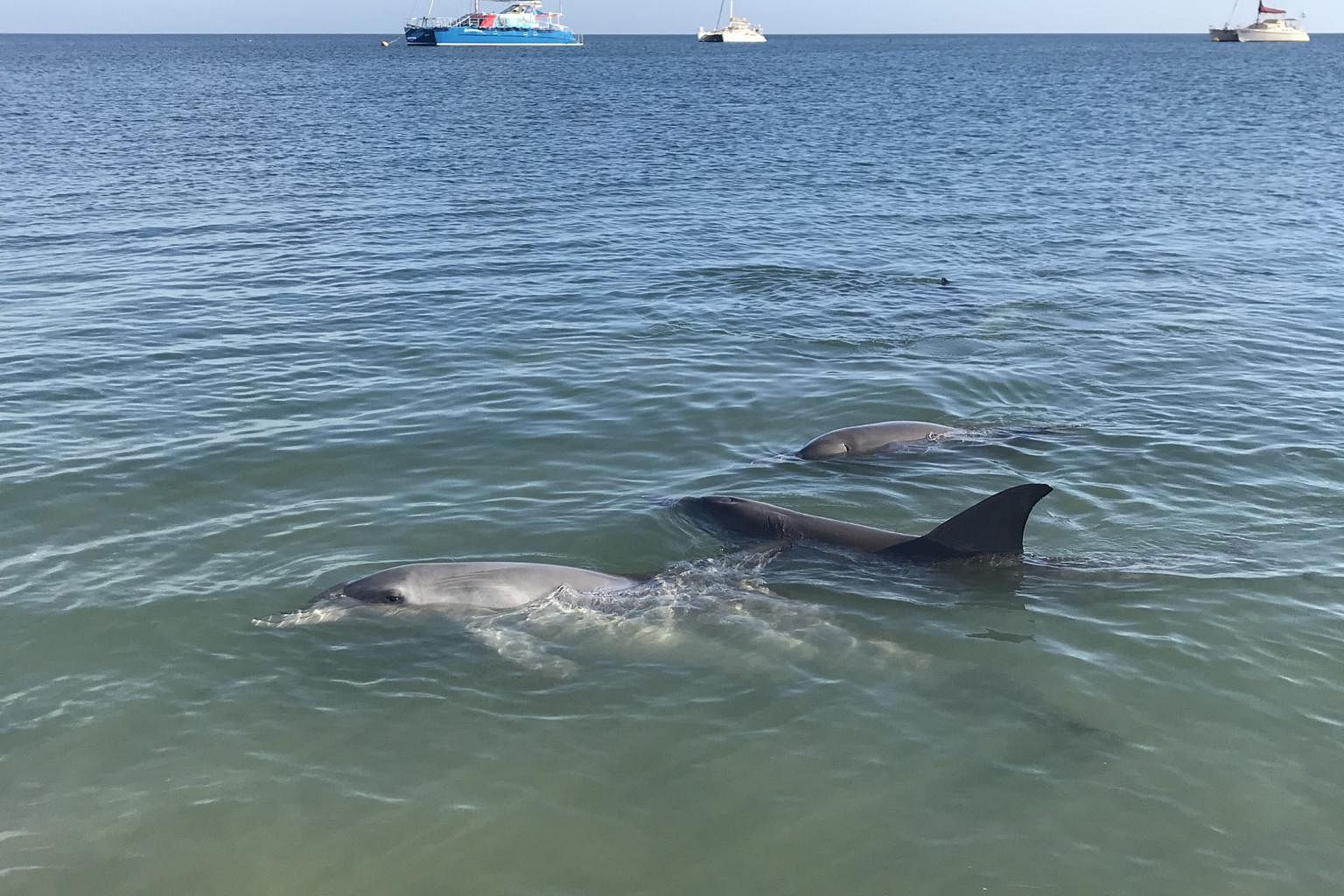
A few mature females are selected and fed fresh local fish by volunteers under strict guidelines every morning, as visitors line the beach, up to their calves in the water, for the chance to get close and maybe feed one of the dolphins themselves.
The creatures are playful and a bit exhibitionist, smiling and showing off for the crowd they know is there just for them. Everyone is having a good time.
Aboriginal tales
After checking into our beachfront rooms at the RAC Monkey Mia Dolphin Resort where the dolphin interaction occurs, then sunset drinks and a delicious dinner at its Boughshed Restaurant, I meet Mr Darren "Capes" Capewell, owner of Wula Gura Nyinda Eco Cultural Adventures for a Didgeridoo Dreaming Night Tour.
A descendant of the Nhanda and Malgana people who were the original custodians of Gutharraguda, the land people call Shark Bay, he takes us through the bush and across sand dunes in the dark, down to a roaring acacia wood bonfire on the beach to tell us some of the stories of his people.
First, he asks us to run the sand through our fingers to greet the land. Then, as we make ourselves comfortable, he cooks fish and bush tucker on the hot coals and tells us about the different "countries" of the indigenous groups who have lived up and down the coast - the saltwater people, freshwater people, desert people.
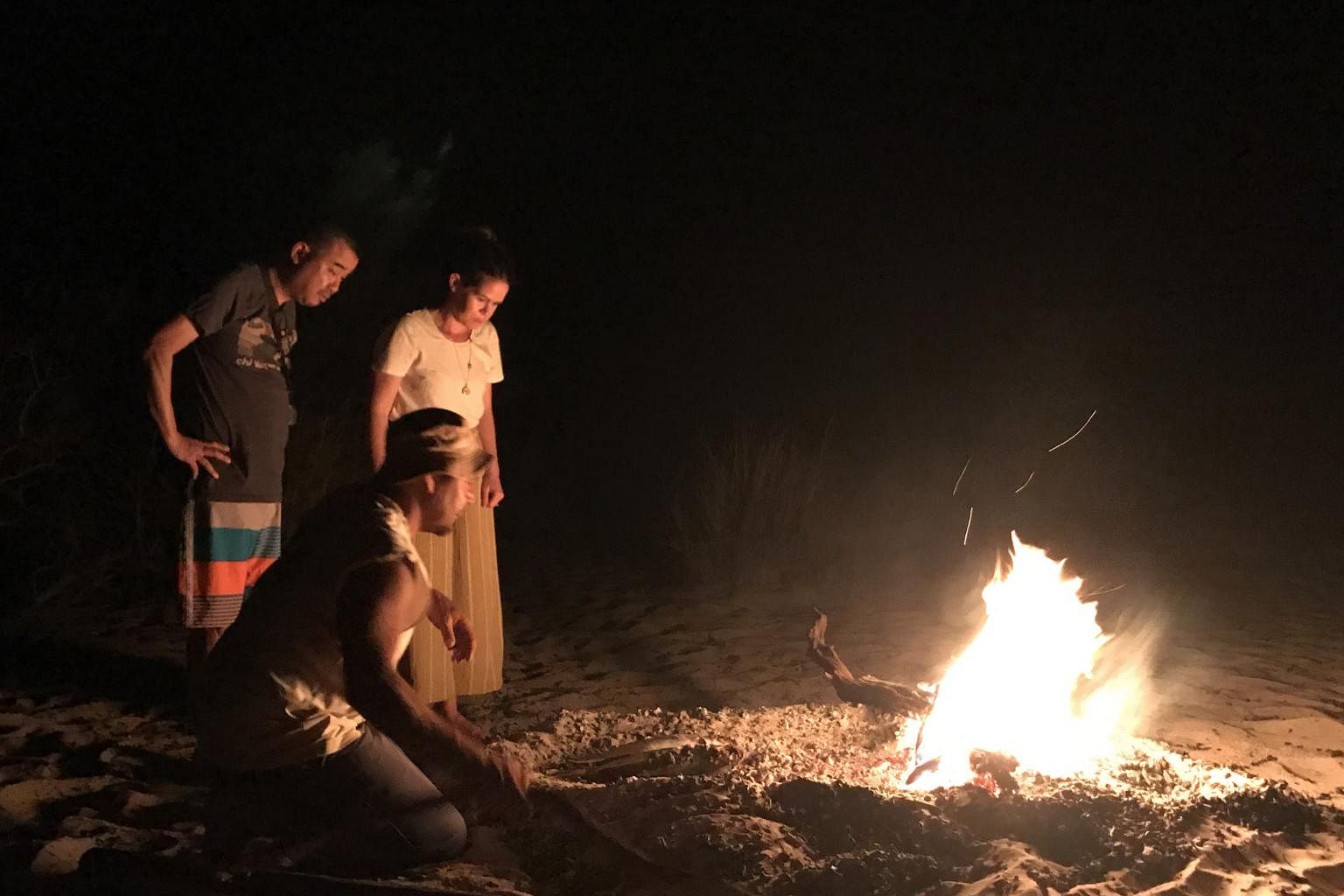
There are about 16 Aboriginal groups in this region alone, and he regales us with some of their stories about the creation of this land and the constellations which fill every corner of the sky.
I look up just in time to see a shooting star race across the night sky. I have not seen one in years, but Capes tells me not to point. "It's rude and bad luck. Those are travelling spirits," he says.
He is a passionate storyteller, and it is a pleasure and a privilege to learn from someone who is committed to preserving this traditional knowledge and way of being. We sit together for two hours as he shares his experiences as an indigenous man and plays his didgeridoo, its deep, earthy tones resonating through the campfire. "Our culture is not lost. It's sleeping," he says. "And it's ready to wake up."
Abundant marine life
In the morning, we head out on the 18m catamaran Aristocat 2 with Perfect Nature Cruises in search of the bay's dugongs.
Shark Bay is home to one of the largest dugong populations in the world - about 10,000 of them swim in these waters. The shy, elusive mammals can be hard to spot in the silty bay, particularly as their rotund bodies start out sandy beige and turn darker as they age.
They do not spend a lot of time on the surface either. Dugongs typically pop up for a quick breath and then submerge themselves again. But we manage to spot a mother and calf, just about six months old, cruising quietly in the water.
They are not as flashy as the nearby dolphins, but their calm, mysterious, rare presence adds a sense of magic to the bay.
The sealife here is fantastic - Shark Bay has 320 species of fish alone. While snorkelling in and around the crevices of one rocky outcrop near Dirk Hartog Island, I see dozens of different fish, including longfin bannerfish, moon wrasse, yellow clownfish, sweetlips and a white-eyed moray eel, all within 30 minutes.
According to Mr Ed Fenny, marine biologist and charismatic captain of Shark Bay Dive and Marine Safaris, it is common on scuba dives to see dolphins, turtles, tiger and lemon sharks, dugongs and rays too.
As we make our way by boat to the Zuytdorp Cliffs on the outer edge of the bay, he narrates the biology, geography and history of the region from the 17th-century arrival of the Dutch to the present day.
Named after the Dutch ship that wrecked near here in the early 1700s, the cliffs culminate at Steep Point, the most westerly point of mainland Australia, and from the water, the cliff face looks like the profile of a Dutchman screaming out into the waves.
Steep Point is famous for land-based sport and game fishing, and we see half a dozen fishermen on the rocks with lines flung out into the deep, hoping to catch trevally, Spanish mackerel and sailfish.
Exclusive luxury
Back on the Peron Peninsula, we meet Mr Harvey Raven, owner of Monkey Mia Wildsights for a four-wheel-drive tour of Francois Peron National Park.
As we drive past ashy, barren-looking depressions along the road, he explains that while they look dead now, they are actually gypsum lakes, locally known as birridas. When water collects during high tides or after heavy rains, they become a hive of invertebrate and bird life.
"There's nothing spectacular-looking about this part of the country... until you get to the coastline. Then it's really spectacular," he says of the burnt orange dunes and rust-coloured cliffs which pop against the white sand and turquoise sea.
Shark Bay is at the cusp and confluence of different environments - where the outback meets the coast, eucalyptus meets acacia, tropical fish meet temperate.
The wildflower season in September and October is also sensational, he says, with over 700 species of flowering plants. "It's like the countryside has been painted in swathes of purple, yellow and white."
We spend the afternoon walking along the cliffs, beaches and sand dunes of the park. I cannot stop gazing at the wild beauty around me. The colours are so vivid, they are visceral.
The beauty continues when we arrive at Dirk Hartog Island and walk from the water to the Eco Lodge just 30m from the beach. Fuchsia bougainvillea crown the tin roof of the former sheep shearer's quarters, which was converted into six en-suite rooms when the island transitioned from a sheep station to an Eco Lodge in the early 1990s.
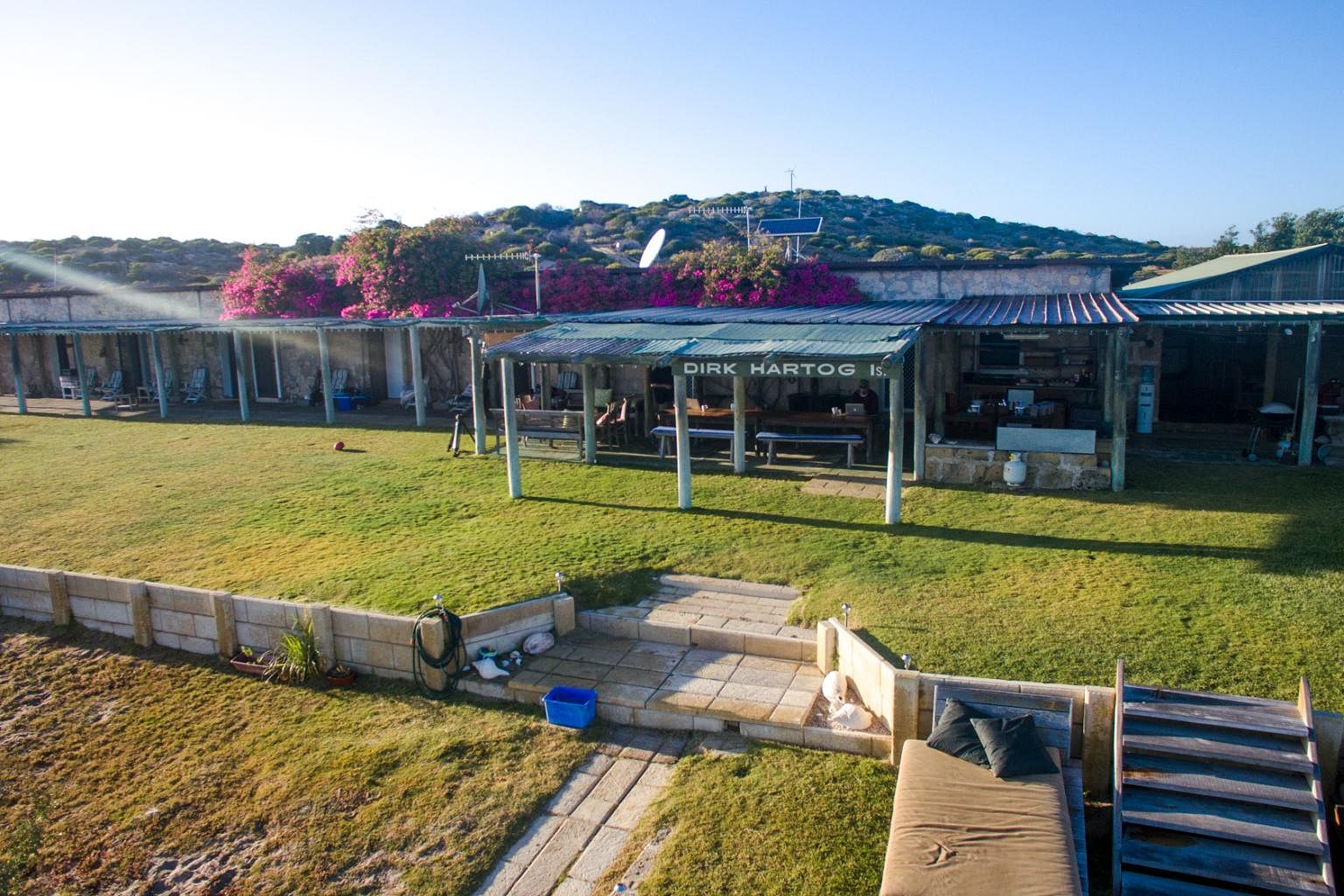
Named after a Dutch seaman who arrived on the island in 1616, and whose recording of it on a pewter plaque made it the first known landing of a European on Australia's west coast, Dirk Hartog Island was first settled as a sheep station in the 1860s.
It was home to over 25,000 sheep at its peak and it is now one of the most in-demand holiday destinations in Western Australia.
The Eco Lodge is the only full-service accommodation on the 620 sq km island, and visitors who want to stay in its half-dozen rooms or in the lodge's self-contained Ocean Villa must book at least 12 months in advance, even outside of the peak periods during school holidays and from April to May.
People are drawn to the rustic retreat for its remote nature and the warm hospitality of its managers, husband-and-wife team Kieran and Tory Wardle.
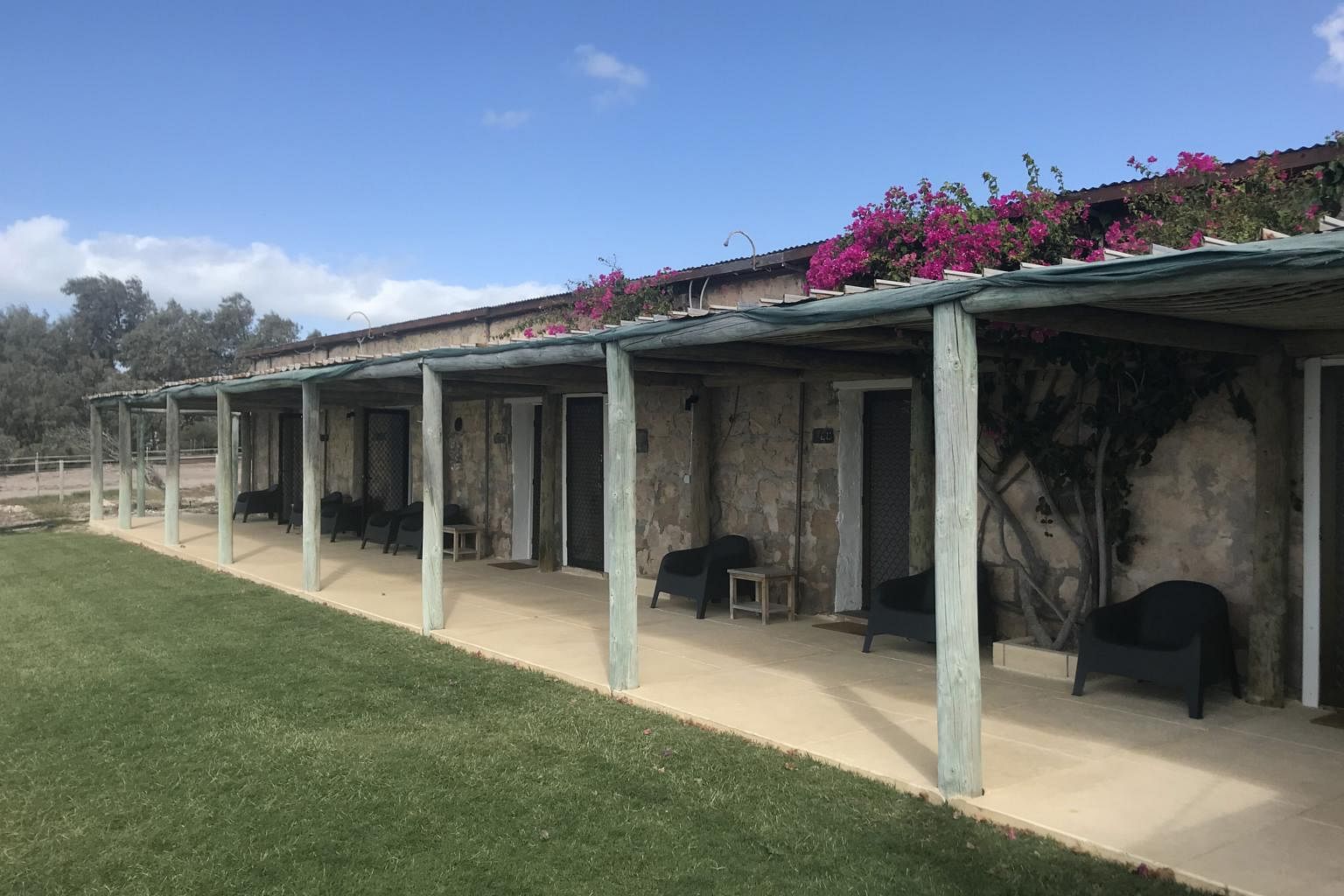
Kayaks and stand-up paddleboards line the sand. There is a pool table, outdoor dining and lounge area, a private library and a fire pit.
Inscription Bar & Cafe next to the lodge serves barista coffees and tea in the morning and cocktails at night, including its signature Island Gin & Tonic made from their very own Inscription Gin.
This is exclusive, barefoot luxury, not in the Maldives sense of expensive decor and high-end design, but in the luxuries of time and space, peace and quiet, freedom and adventure, and coveted access to explore the incredible landscape at your doorstep.
From the Eco Lodge, we take a four-wheel-drive tour across the island's unpaved tracks, over towering sand dunes and coastal heath of spinifex, wax plants and saltbush, to see the swells smashing into the rocks at Surf Point.
Every few minutes, a wave hits the rocks below and the blowholes shoot seawater 40m into the sky.
It is an uncanny natural reflection of this stretch of the Indian Ocean, which becomes a highway of humpback whales, thousands making their way north during their migration. I would love to be here between July and November when guests often see the whales playing and breaching in Homestead bay in front of the lodge.For now, I have Herald Heights, 180m high and the tallest cliff on the island, where we open a bottle of wine and toast to Shark Bay and Dirk Hartog Island, and watch Australia's last sunset of the day sink beneath the waves.
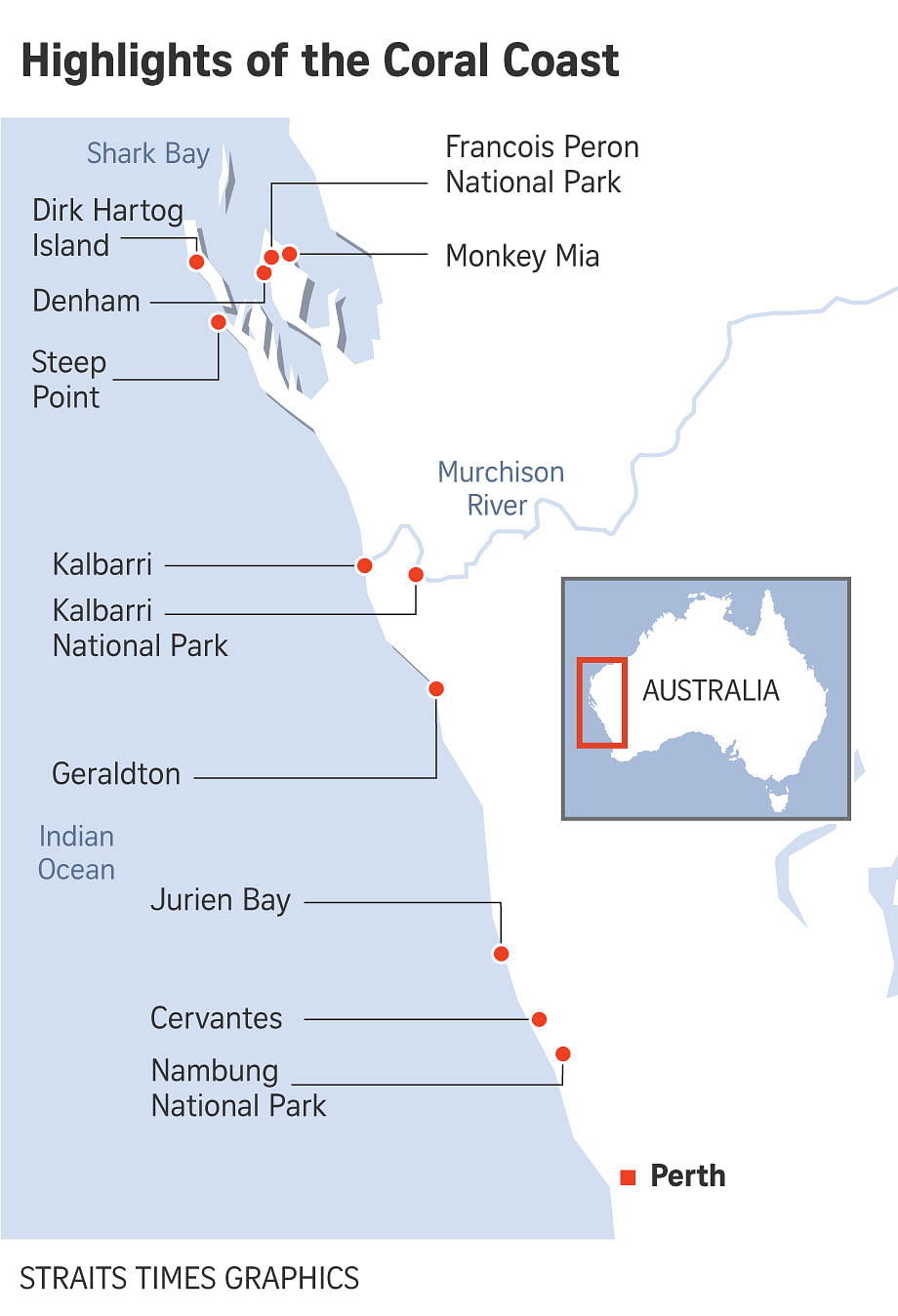
Travel tips
- Buy a multi-day pass for the national parks to save time and money. If you have already bought a single entry or day pass, you can upgrade to a multi-day pass by bringing your receipt to a Parks and Wildlife Service office within seven days, and the value of the receipt will be deducted from the cost of your desired pass.
- Take along fly nets. In search of moisture, the flies hone in on your mouth, nose and eyes. Walking to Nature's Window would have been very unpleasant, if not impossible, with the multitude of flies around. Buy the nets at an IGA supermarket, pharmacy, camping or outdoor store in Perth before making the drive to Kalbarri, where the nets are quickly snapped up when the flies are swarming.
- Plan ahead. If you are keen to walk the routes of Kalbarri National Park, take note of the weather, temperature and time of year. Access to some routes are closed after 7am because starting any later is just too hot and too dangerous. Hikers are advised to take along three litres of water a person.
Getting there
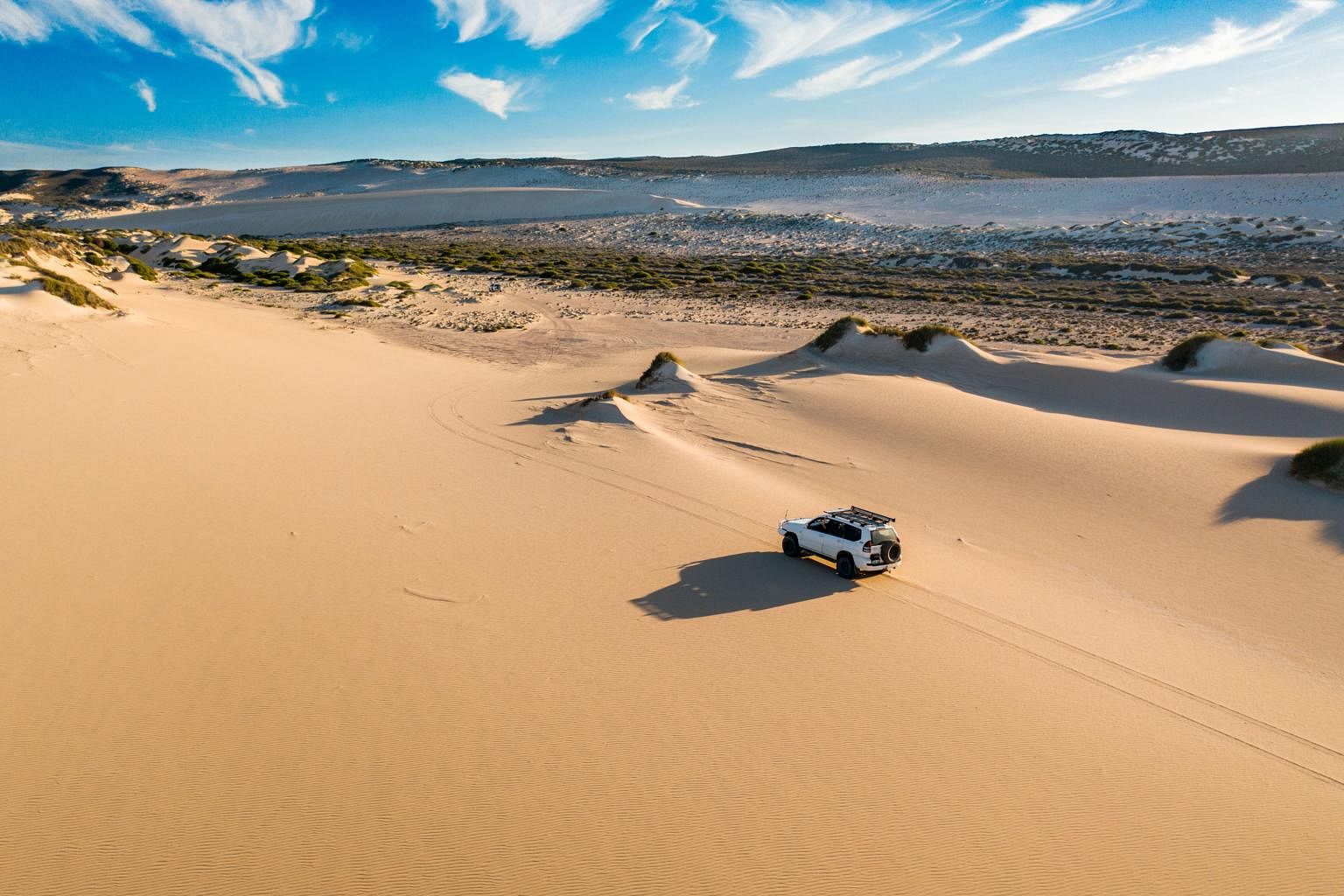
The drive from Perth to Kalbarri takes about six hours, and the drive from Perth to Shark Bay takes about nine hours.
Visitors can also fly two hours from Perth to Monkey Mia with Rex Airlines and drive four hours from Monkey Mia to Kalbarri.
Visitors who want to stay at the popular Dirk Hartog Island Eco Lodge or the self-contained Ocean Villa should book 12 months in advance, even outside of the peak holiday periods.
Visitors who want to reserve a campground should book six months in advance during peak periods and two to three months in advance for the low season.
If you cannot score accommodation, the Wardles now offer day Island Life Adventures day trips from Denham to Dirk Hartog Island.
The vessel can accommodate up to 30 guests and operates on Tuesdays and Thursdays to Sundays. The island and its accommodation are closed from Nov 31 to March 1 every year.
- A former Straits Times travel correspondent turned freelancer, Lydia Vasko is a city girl in practice but a country girl at heart, whose favourite destinations satiate her love of good food, wine, culture and the great outdoors.
- This trip was partially hosted by Tourism Western Australia.
- This is the first instalment of On The Road, a new series on the freedom of road and rail journeys amid the resurgence of international travel.

